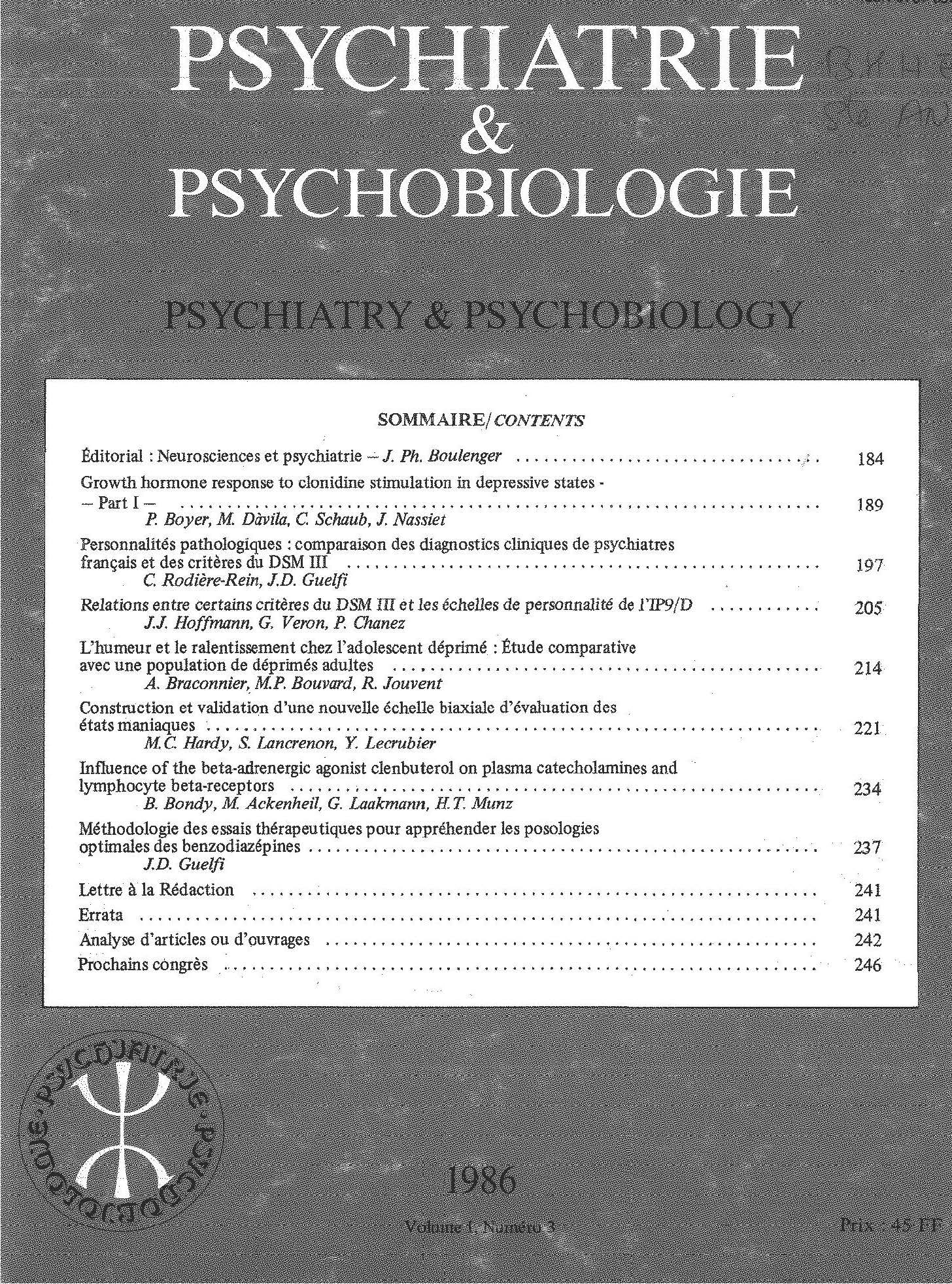Article contents
Chronic alcoholism in relation to attempted or effected suicide. A long-term study
Published online by Cambridge University Press: 28 April 2020
Summary
Rushing (1968) offers two hypotheses for the possible structural connection between suicidal and chronic alcoholic case groups : the “processual cause theory” is based on the idea that alcoholism leads through its problematic nature to suicide attempts. In the “common cause theory” alcoholism and suicidai acts are due to mutually shared factors, e.g., social isolation and enforced social integration.
Data on suicide and suicide attempts were obtained as a separate aspect of a comprehensive follow-up investigation. All patients from one particular region in Austria, who had been admitted to hospital between 1976 and 1978 for treatment of chronic alcoholism took part in this study. Follow-up time was 4 to 7 years. 101 patients died during this period. 356 patients remained under close follow-up investigation. In addition to information about basic drinking habits, we attempted to identify predictive factors regarding the course of alcoholism and investigated familial circumstances, development and interactions.
In contradiction with both theories forwarded by Rushing, we were able to isolate a special subgroup of chronic alcoholics attempting or committing suicide. This group is characterized by a depressive symptomatology (endogeneous-depressive syndrome, according to the Viennese Diagnostic Criteria), as well as by the presence of other psychiatrie disturbances underlying chronic alcohol abuse. Family histories also uncovered evidence of psychiatric illnesses. Cases of negative alteration in social status and problematical partnerships could be found in this subgroup. Drinking habits themselves did not differ from non suicide-prone alcoholics.
Résumé
Rushing 1968) propose deux hypothèses pour expliquer une relation structurelle possible entre des malades présentant un risque suicidaire et l'alcoolisme chronique: la théorie de «causalite processuelle» qui se fonde sur l’idée que l'alcoolisme onduit par sa problématique spécifique à des tentatives de suicide et la théorie des «causes communes» qui suppose aux l’alcoolisme d'une part et des actes suicidaires d’autre part sont dus à des facteurs communs aux alcooliques et aux malades suicidaires, tels que l'isolement social et la contrainte à l'intégration sociale.
Les données de cette étude sur le suicide et les tentatives de suicide chez les alcooliques chroniques représentent un spect particulier d'une vaste recherche au cours de laquelle les malades ont ete suivis au long cours. Tous les malades l“une région délimitee de l’Autriche admis dans un hôpital pour être traités à cause d'un alcoolisme chronique entre 1976 et 1978 ont été intégres dans cette étude. La période d'observation s'étend de 4 à 7 ans. 101 malades sont morts endant cette période; 356 sont restés sous observation suivie continue. Outre le recueil d'informations sur les comportements alcooliques, les auteurs ont essayé d’identifier des facteurs permettant de prédire l’évolution de l'alcoolisment ont examiné la situation familiale, son évolution et les relations de celle-ci avec l’abus.
Contrairement aux deux théories de Rushing, cette recherche a permis de constater que les alcooliques chroniques commettant des tentatives de suicide ou des suicides forment un groupe particulier. Celui-ci est caractérisé par une symptomatologie précise (syndrome endogéne dépressif conformément aux critéres diagnostiques de recherche de Vienne) insi que par d'autres troubles psychiques formant la base de l’abus chronique d’alcool. L'anamnese familiale de ces cas dévoile également la présence fréquente de maladies psychiatriques. Une détérioration sociale et des relations problématiques avec le partenaire sont également fréquentes dans ce sous-groupe. En revanche, les comportements alcooliques de ce sous-groupe ne se différencient pas de ceux des alcooliques sans inclination suicidaire.
- Type
- Original article
- Information
- Copyright
- Copyright © European Psychiatric Association 1988
References
- 4
- Cited by



Comments
No Comments have been published for this article.